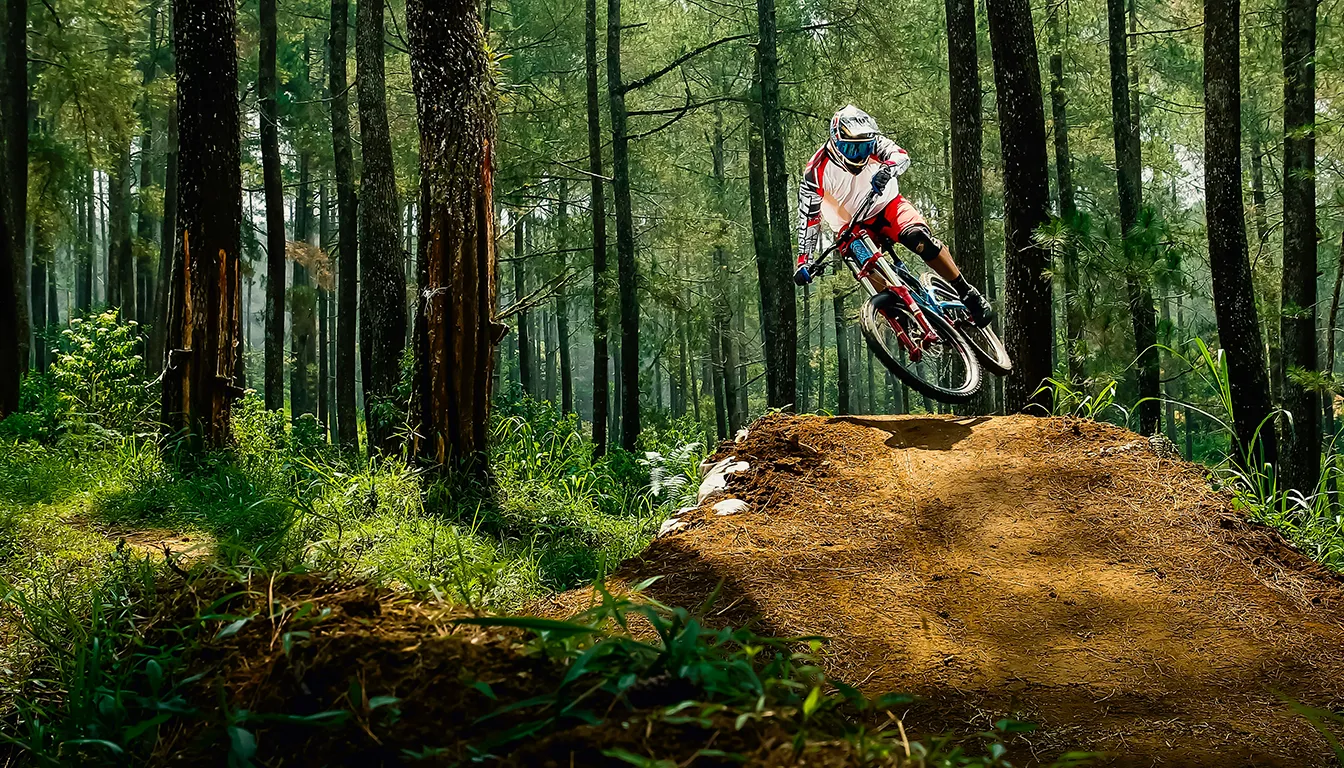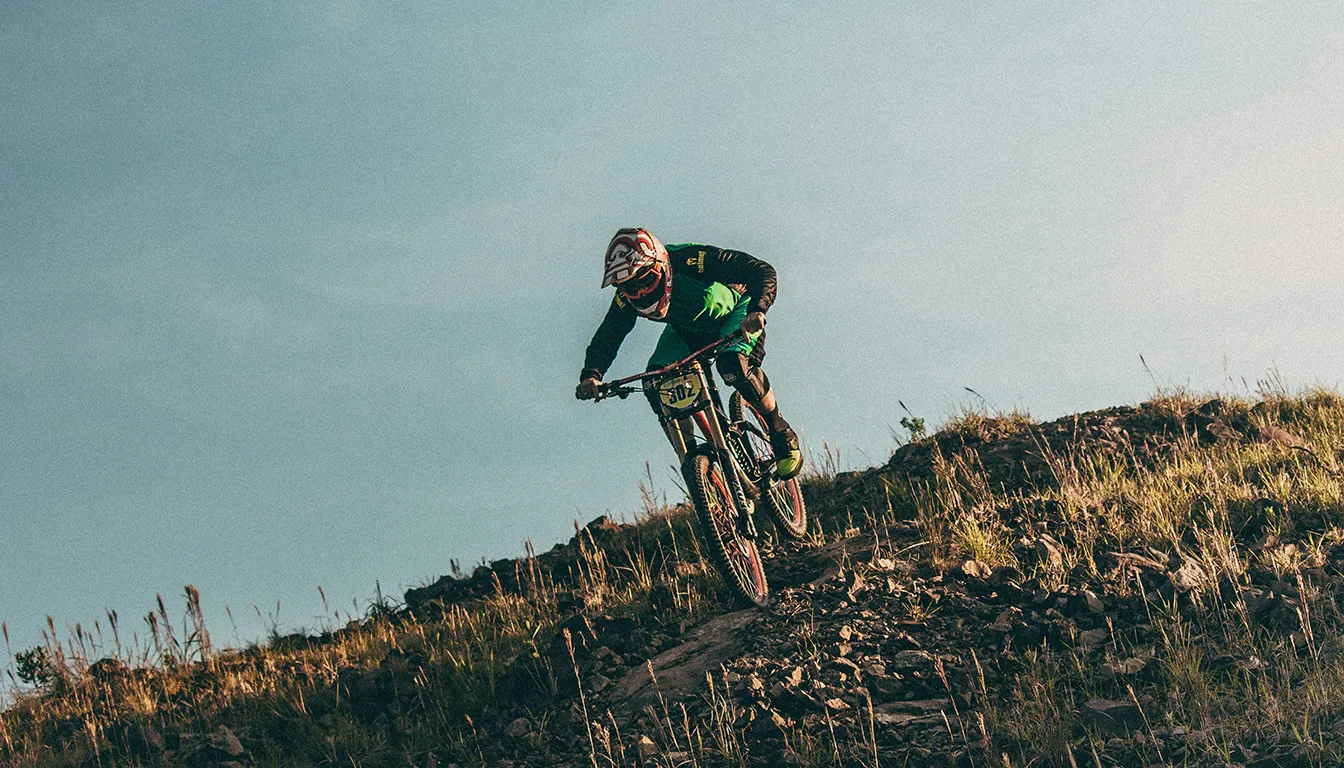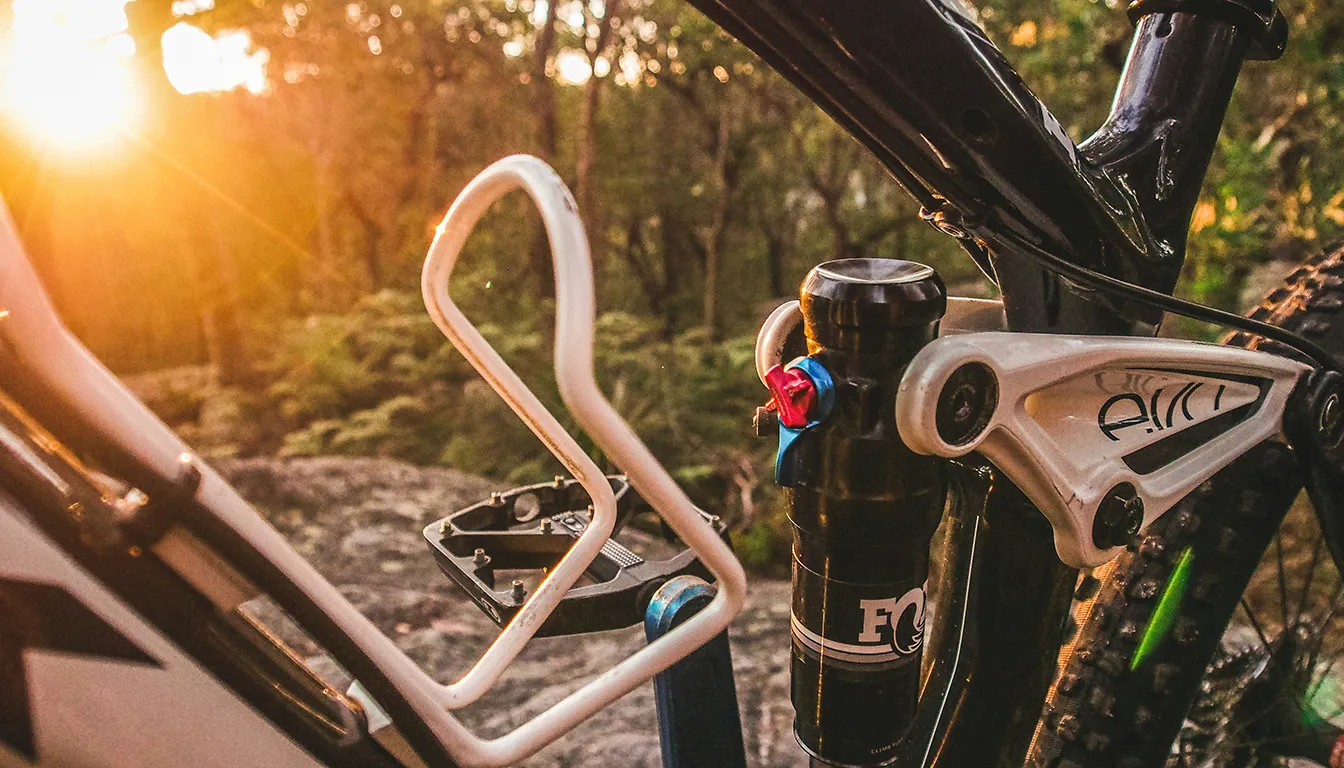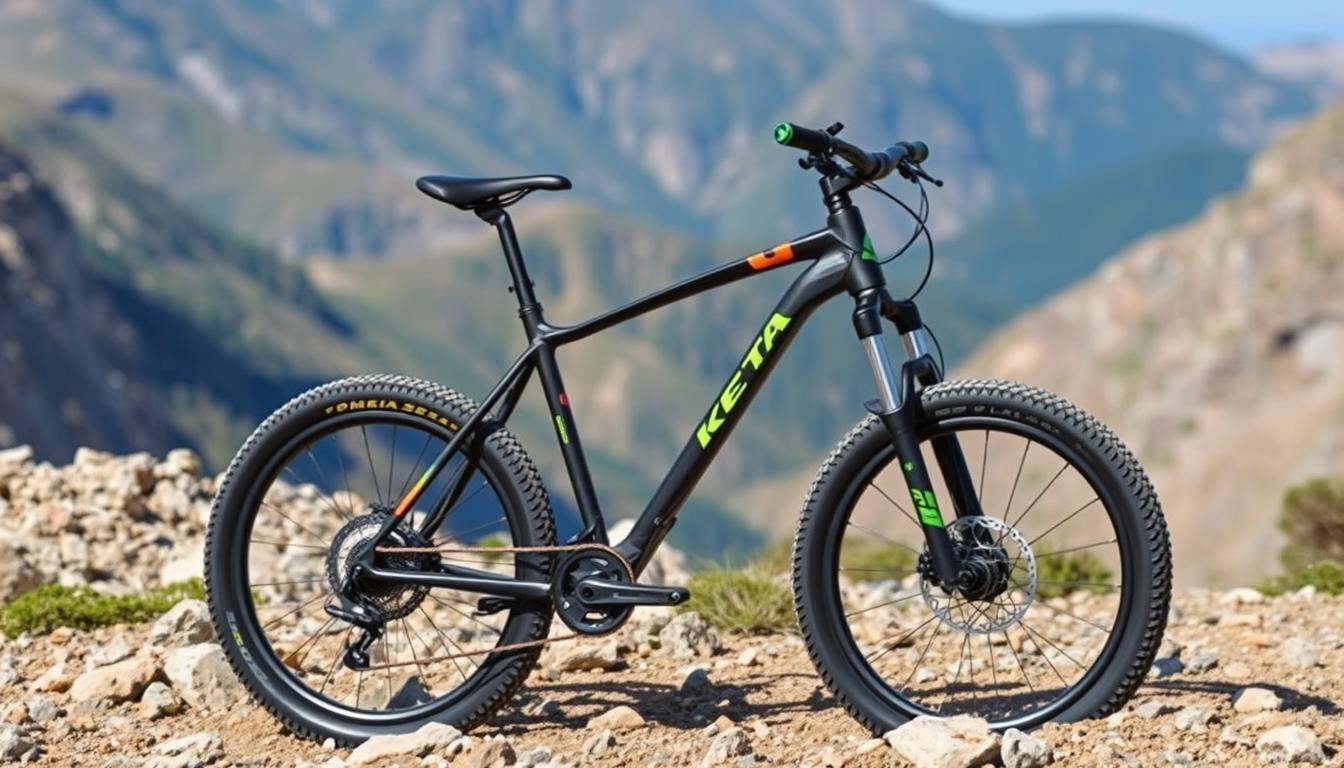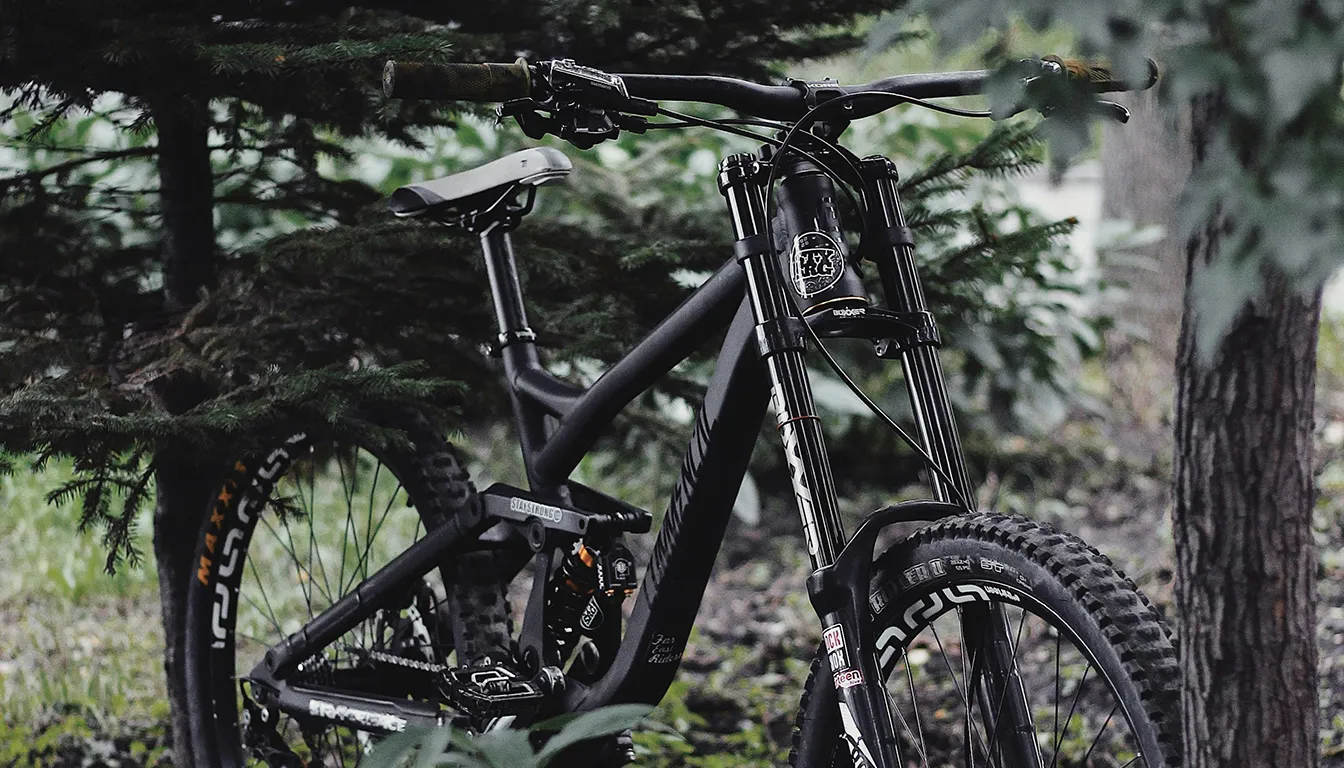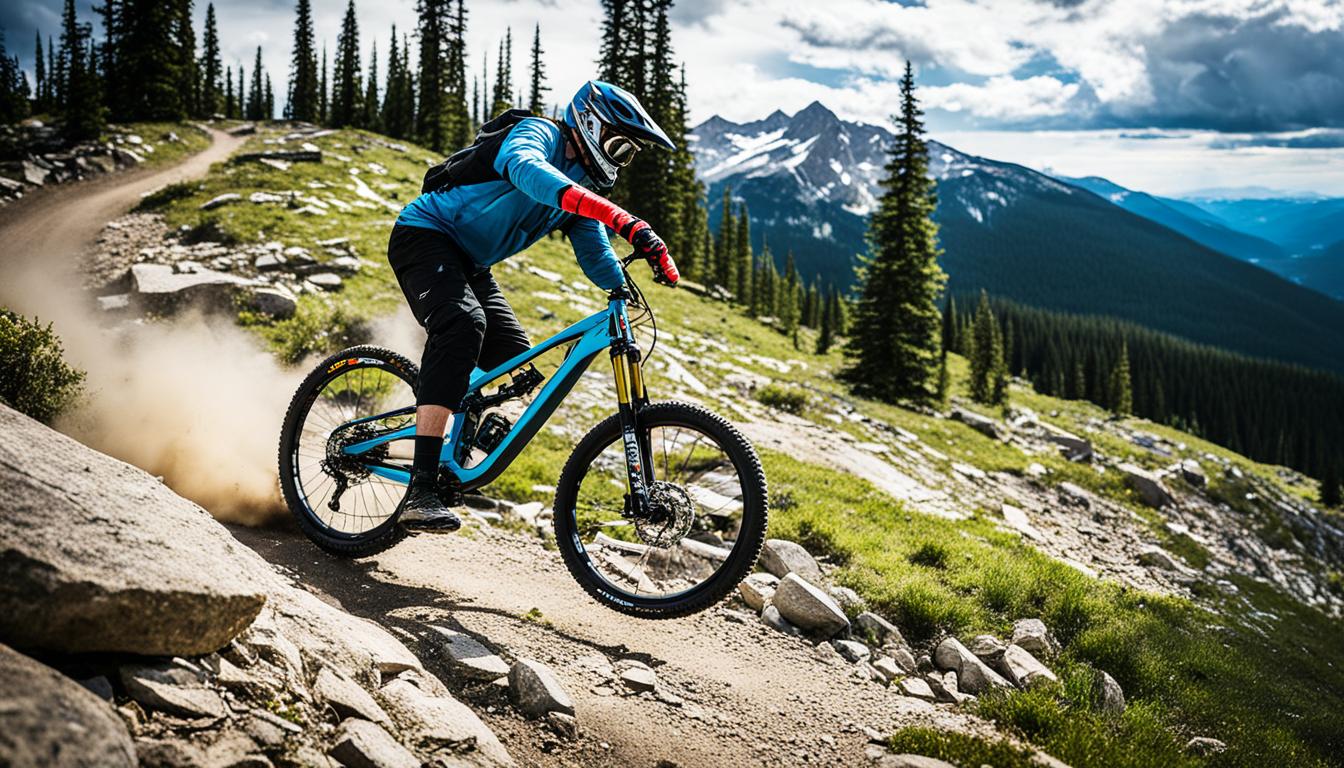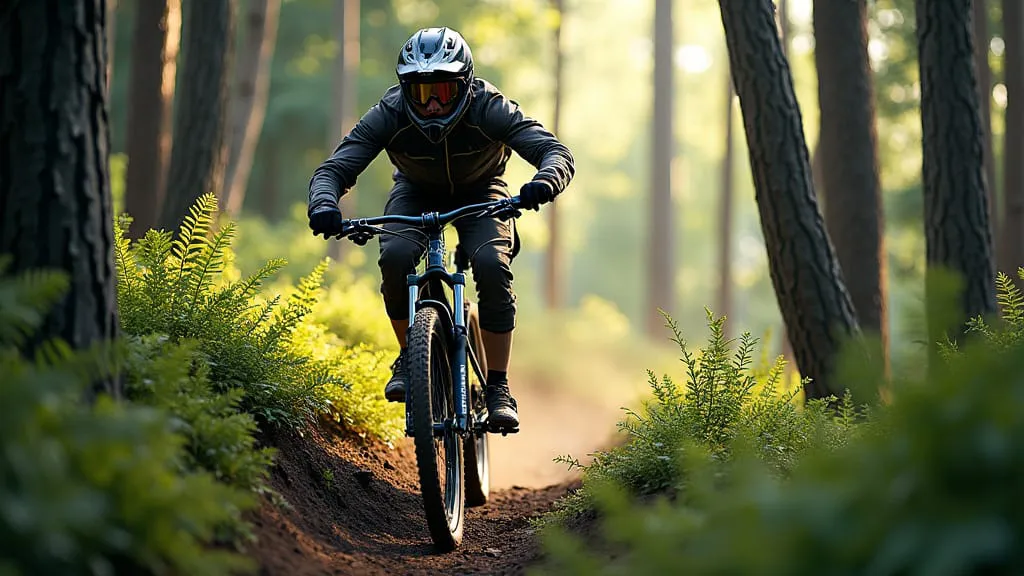Getting good at going down steep paths on a downhill bike is key. It’s vital whether the trail is steep or full of tricky spots. Knowing the right mountain biking techniques helps you control your speed. Many bikers feel nervous about going downhill, especially on tough routes. But, the correct method can make it exciting instead of scary.
This guide will cover important things like how to stand, how to brake, and tips to get better. It will help you feel more sure of yourself on steep hills. Remember, top riders like Tom Pidcock are great at going downhill. This shows that with practice and learning the right ways, anyone can get really good at mastering descents.
Understanding the Importance of Body Position
A rider’s body position is key to handling descents well. A stable position gives better control and improves balance in mountain biking. Knowing how to place your body on the bike boosts your riding quality.
Stable Body Position for Control
Keeping a stable position means balancing your weight evenly on both wheels. Leaning slightly forward when going uphill helps keep the wheels on the ground. When going downhill, shift your weight back for better control.
Lower your chest and hips to get more grip and stability, especially on rough ground. Using brakes lightly rather than sharply braking prevents skidding.
Using Your Knees for Balance
Your knees are crucial for keeping balance in mountain biking. Keeping them bent helps you adjust to changes in the terrain, acting like extra suspension. While descending, dropping your heels can improve stability and grip on the pedals.
Slight movements with your knees can help maintain a steady body position. This makes for a smoother and more controlled journey.
Myths Around Weight Distribution
Some think that shifting weight far back when descending ensures control. However, balancing weight between the wheels is actually better for stability. Old methods from the 90s can slow you down.
Today’s mountain bikes with lower seats work best when you keep your weight centred. This approach enhances traction and improves how you handle the forces while riding.
How to Master Downhill Mountain Bike Descents
Getting better at going downhill on a mountain bike needs skill and lots of practice. It’s good to practice rolling drops to improve. Knowing the right way to sit and handle your bike helps when going downhill. It’s important to learn how to move smoothly and be ready for changes in the path.
Practicing on Rolling Drops
Rolling drops teach you about downhill dynamics. Getting your body ready before a drop is key. Being in the right position makes the ride smoother and safer. Aim to keep balanced over the bike, which helps in jumping and going down steep bits.
Focus on Fluidity and Anticipation
Being fluid and ready for trail changes is key for good downhill riding. Being able to quickly deal with sudden obstacles makes you better at controlling the bike. This approach boosts your confidence and skills for tougher trails. As you get better at these, downhill rides become more enjoyable.
The Balance between Speed and Traction
Finding the perfect mix of speed and grip is essential. Use your brakes evenly to stay in control. Know your grip level and adjust your speed for safety. Learning to brake and manage traction well makes your biking much better. Check out this guide on managing descents for more tips.
Braking Techniques for Steep Trails
Braking right is key to handle steep trails safely. It’s a must to know these techniques well to keep control when going downhill. Beginners, in particular, should learn to brake correctly to enjoy their rides more.
Brake Early and Effectively
Starting to brake early makes going into steep parts smoother. About 70% of the braking power comes from the front wheel. The other 30% is from the back wheel. This split works well on not-so-steep slopes. On much steeper slopes, use the front brake more to keep your grip.
Beginners can get better at controlling their speed by using one or two fingers on the brake levers. This way, they won’t lock the wheels but still brake hard.
Understanding and Managing Your Grip
Managing your grip is crucial when braking on steep trails. The way your bike grips the ground changes as you move down, especially on loose or wet paths. Push your weight back and keep your body centred to stop from falling forward. This also keeps your steering sharp and control tight.
Adjusting the height of your saddle helps keep your bike steady when you’re going down. Keeping your arms and legs bent is also key to better control.
Fluidity Over Rigid Control
Being flexible in how you control your bike helps a lot on steep trails. Keep low and stay loose to react quickly. This makes starting to brake and stopping smoother. Try not to brake too hard for too long. This can overheat your brakes, which might stop them from working.
Learning about under-rotation and the projection principle is also essential. For more tips on improving these core skills, see this helpful resource.
Key Tips for Confidence on Descents
Gaining confidence when going downhill is key to a fun and secure ride. Keeping a relaxed mindset lets cyclists handle paths better and boosts their performance. It’s crucial to know where and how to look ahead on the trail. This helps spot potential hazards early, instead of being caught off guard.
Maintaining a Relaxed Mindset
Being calm while going downhill helps in staying in control. If you’re tense, your bike handling gets shaky, making it tough to adapt to the ground. Using breathing methods and focusing on enjoying the ride can make you calmer. Imagine sailing smoothly down slopes before you even start.
Vision and Focus: Look Where You Want to Go
Keeping your eyes on the track ahead helps avoid getting stuck on obstacles. Good vision means you can adjust your movement and technique in time, boosting your downhill confidence. With more practice, looking forward will become an automatic action, not something you have to think about.
Learning from Experienced Riders
Watching skilled cyclists is a great way to pick up tips. They show the best ways to position yourself, choose paths, and brake. Learning from such riders, especially in a safe setting, helps understand how to handle different types of trails.
Conclusion
Learning to ride downhill on a mountain bike is all about mastering specific skills. It involves getting your body position right, braking effectively, and building up your confidence. We’ve talked about how these skills can make riding safer and more enjoyable. It’s important to keep practicing and stay positive, as these factors are key to getting better at mountain biking.
Joining a cycling community can also be a big help. You can learn a lot from group rides or bike clubs. These groups can help you face your fears of steep and tricky paths. Being part of a community builds your confidence and creates a sense of friendship among cyclists. Don’t forget about trying interval training to boost your endurance and strength. This will help you ride better.
The joy of mountain biking comes from learning and improving. By focusing on the ten key areas we’ve mentioned, you can get better at tackling tough trails. This will also grow your love for the sport. So, get your gear ready, keep practicing, and look forward to the thrilling rides ahead!
FAQ
What should I focus on to improve my downhill mountain bike descents?
To get better at downhill rides, work on your body position, braking, and mindset. These aspects will help you feel more in control. They make a big difference on steep and rough trails.
How can I achieve a stable body position while riding downhill?
Keep your upper body in line with the bike and use your knees for stability. Doing so improves your ability to steer and deal with bumpy paths.
Is it necessary to keep my weight back while descending?
No, keeping your weight neutral works best. It helps with stability and control, especially going down steep hills.
What techniques can I use to practice descending?
Rolling drops are great practice. Get in the right position before the drop. Then, move smoothly as you go downhill.
How do I effectively manage speed and traction on descents?
Balance speed and traction carefully. Brake in a way that keeps a good grip. Stay confident as you move down the hill.
When should I brake while descending steep trails?
Brake early and carefully to keep control. Know how braking affects your grip, especially on tricky surfaces. Aim for smooth braking.
What mindset should I cultivate for descending with confidence?
Stay relaxed to enjoy the ride and handle transitions better. Look ahead to see what’s coming. This helps you avoid obstacles safely.
How can I benefit from observing experienced riders?
Watching skilled riders can teach you a lot. You’ll learn from their moves. This can make you more confident and improve your riding.
